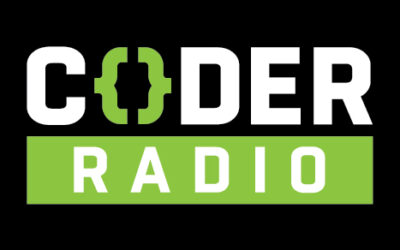Those of you who follow me here or on Coder Radio or on any of the social networks that I frequent will know that I have been running a little experiment with my new Mac Application Code Journal; for those of you who randomly got here via a search or something like that, the experiment was trying to sell a consumer target Mac OS X application outside of the Mac App Store. No need to go into too much detail, since if you want more info you can go check out episode ten of Coder Radio, but the experiment did yield a result and a lot of feedback. Basically, there is ample evidence to support the idea that, in general, apps that target OS X will do better on the App Store than via direct sales.
As with the mobile space, I believe that increased reliance on app stores will have some considerable effects on the business of app development, the developers, and the apps themselves. So I am writing this three part series to discuss those issues and am taking something of novel approach (novel to me at least): I am going to look at this issues by comparing two very different apps Mars Edit, and my own Code Journal. I picked Mars Edit as a point of comparison because it is established and is in a different space than Code Journal, so there isn’t any risk of bias. Additionally, in many ways Mars Edit can be seen to represent the traditional Mac application model while Code Journal more closely resembles the single purpose “app ideal”.
The eight hundred pound gorilla in the room is app pricing. In general it is becoming increasingly hard to sell an app for more than a few dollars; some would argue that even getting the few dollars at all is really hard. Of course, there are exceptions to this, but those tend to be from either large game companies (think EA, Activision, etc) or from established Mac developers. An example of the latter would Daniel Jalkut’s Mars Edit, an app that is currently selling for $39.99 on the Mac App Store. Mars Edit’s success is a great story but also very atypical of pricing for productivity apps in the store and a lot of that may be due to Jalkut’s and the app’s cache’ in the Mac developer / enthusiast community; again for those who don’t know Jalkut was a former Apple engineer and has been fairly active in the community. Additionally, Mars Edit was successful long before Jalkut took it over; he actually bought the app from another developer in 2007. A quick survey of competing apps in the same space on the store showed that most of Mars Edit’s competitors tend to be in the ten to fifteen dollar range and seem to have poorer placement in the store, which suggests weaker sales. One notable exception is the $39.99 MacJournal; Yes, there are of course other applications on the store that charge more, such as OmniGroup’s OmniPlan, but we are looking at its competitors here.
What does this all mean? Honestly, Apple is the only who has the data to be able to truly say if the store if pushing prices down across the board. There certainly seems to be a correlation in applications being priced lower and the rise of the app store model, but there is an alternative argument (with an alternative villain) that could be made: free web apps may be forcing prices of native apps down by training consumers that a large class of applications should be free, such as Google Docs. Again, Apple is really the only who can disprove or prove the first point for sure and the web app debate is something for another day.
Check back soon for a look at what the App Store seems to be doing to independent software developers.
If you have some feedback please find me on Google+ or Twitter. Also, if you like my posts or work on Coder Radio, please consider purchasing Code Journal either from the Mac App Store or direct.






